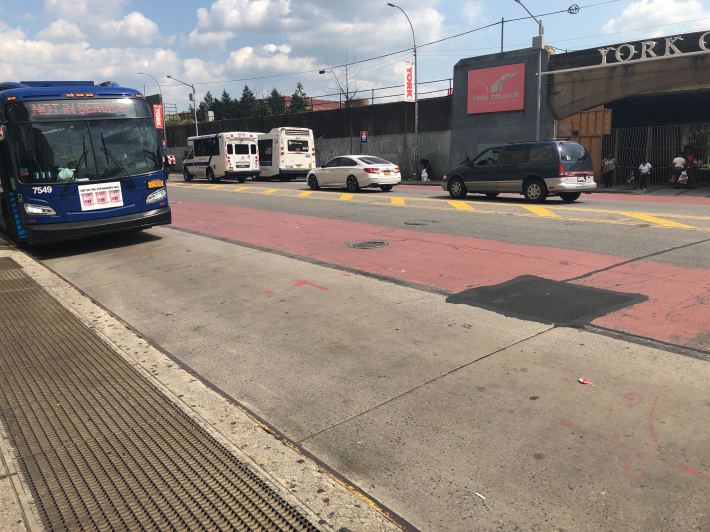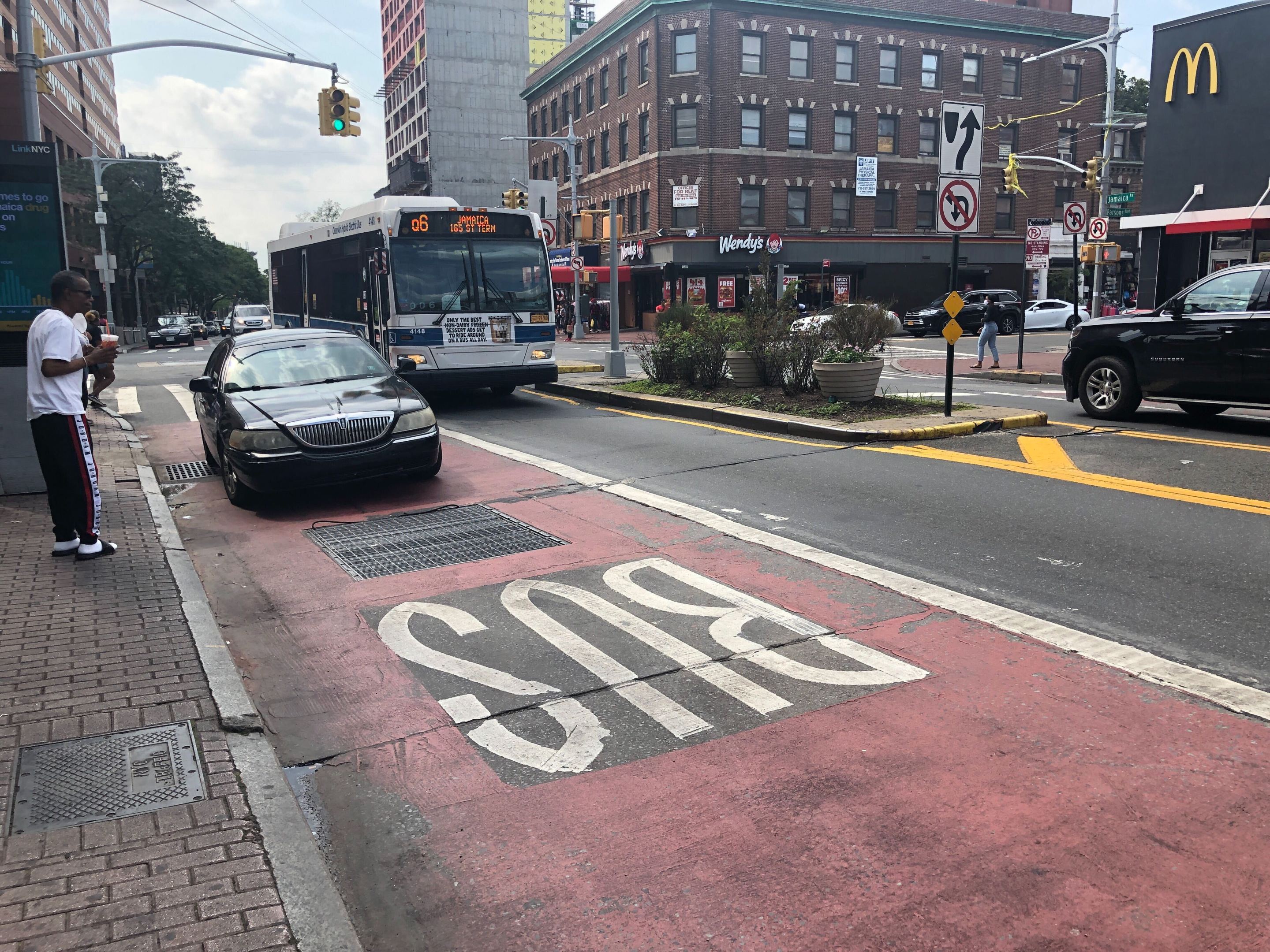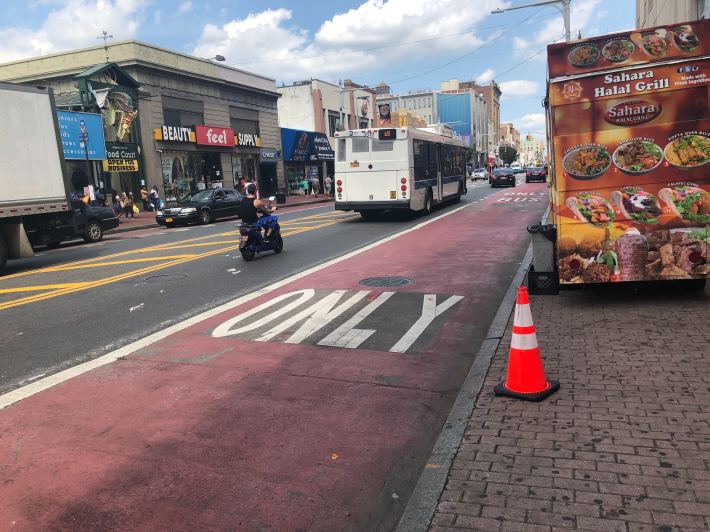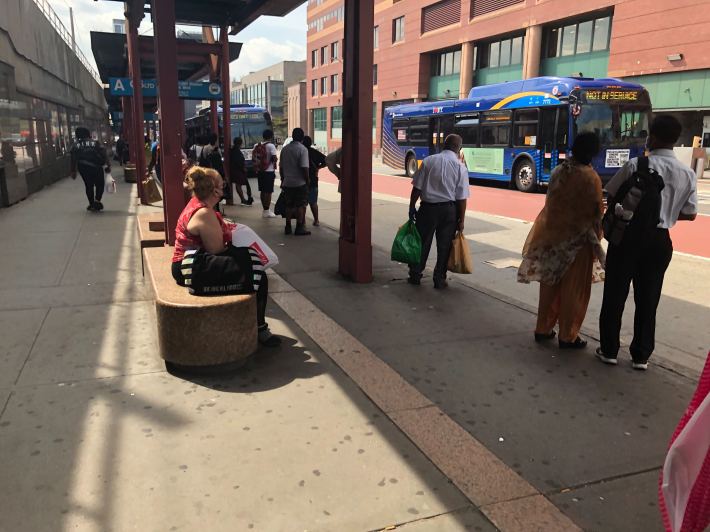At least one congested neighborhood wants a car-free busway — just not where the mayor wanted to put it.
South East Queens elected officials, civic groups, and constituents want the Department of Transportation to change its plans to turn Jamaica Avenue into a busway and instead put the transit-improving infrastructure on Archer Avenue, which they said would help a quarter-million daily riders.
“A busway along Archer Avenue, the primary artery in Downtown Jamaica that moves nearly 10 percent of the bus system, would better help remedy those pervasive transit and enforcement issues, and dramatically increase bus speeds,” Queens Council Members Daneek Miller, Adrienne Adams, and Rory Lancman wrote to the DOT on Aug. 26.
The controversy over the location of the busway is only the latest instance in which the de Blasio administration has encountered opposition to its busway projects. Mayor de Blasio said months ago that the city would urgently install five busways in commercial districts, including on Jamaica Avenue from Sutphin Boulevard to 168th Street, to make straphangers' commutes faster and more reliable, especially since so many bus riders are essential workers.
But of the five, only the busway on Jay Street in Downtown Brooklyn has debuted. North of Jamaica in Flushing, the city is also months behind on its plans to install the busway on Main Street after pushback from local businesses and Council Member Peter Koo. A planned busway on Fifth Avenue in Manhattan also got sent back to the drawing board because of the opposition of local merchants. And another planned for 181st Street in Manhattan also has stalled.
The Jamaica Avenue corridor, a business-district thoroughfare that serves 147,000 daily bus riders on 15 routes, needs help; its buses crawl along at just 4.7 to 4.9 miles per hour, according to the DOT.
But Archer Avenue has more daily bus passengers — 225,000, according to the DOT, which claims that bus speeds are higher than on Jamaica Avenue. Miller and his colleagues say buses on Archer Avenue average just 3.9 miles per hour.
On Jamaica Avenue, which has two lanes in each direction, a west-bound dedicated bus lane runs between Sutphin Boulevard and Parsons Avenue. An east-bound dedicated bus lane runs between Parsons Avenue and 168th Street. Both operate only during the morning and evening rushes, from 6 am to 10 am and from 4 pm to 7 pm. But the DOT says that those bus lanes are regularly blocked by vehicles with placards and cars and trucks making drop-offs and deliveries.

On Archer Avenue, which also has two lanes in each direction, a dedicated bus lane now runs in each direction 24/7. An eyes-on-the-street look at the thoroughfare last week showed a fair amount of compliance with the bus-only lanes on the part of other vehicle traffic.

Still, Miller says, Archer Avenue is used by thousands more people who commute locally or via the adjacent Long Island Railroad and subway stations, including the Jamaica stop on the LIRR and the E, J, and Z lines.
“Archer Avenue is far more important, where the majority of buses actually have more lines than any single corridor. During rush hour, the speed is under four miles per hour,” said Miller, who drove a city bus for almost 20 years. “When you reach Archer Avenue, it takes another 20 to 25 minutes to just go four blocks. Certainly something has to be done to mitigate the congestion down there.”
"[Bus speeds on Archer are] completely unacceptable for one of the largest transit hubs in the city," added the letter, which also was signed by State Sen. Leroy Comrie, the Jamaica Center Business Improvement District, Greater Jamaica Development Corporation, Sutphin Boulevard BID, Southeast Queens Muslim Collective, and Queens Youth Justice Center.
The city didn't consult the community or the local elected officials about the Jamaica Avenue location before announcing it, the signees said.
"Based on the conversations we’ve had with local residents, commuters, and business owners over the past six years, this in no way addresses the needs and values of the Southeast Queens community. Instead, it underscores a willful prioritization of a select few over the needs of one of the most transit starved communities in the five boroughs," the letter added.
The fact that Archer Avenue is not a business district, but more residential is all the more reason it needs a busway — more local residents, including students at nearby York College, which has a bus stop along its route, rely on the corridor each day.
Meanwhile, by the time buses get toward that section of Jamaica Avenue, the buses are pretty empty.
"By the time they get to that end of the Jamaica corridor, buses are nearly empty — it's not playing role that Archer Avenue would. It would really make a difference in the lives of hundreds of thousands of people," he said.
Miller and his colleagues don’t want the city to abandon its plans to improve traffic flow on Jamaica Avenue, they still are calling on the city to redesign the corridor with updated parking and standing/stopping regulations.
"This is not trying to kill a project, it's recognizing that people do more than shop in Jamaica, it's how we get into Manhattan, this is our main access to rest of the world," said Miller.
DOT Commissioner Polly Trottenberg said Thursday that both avenues are on the city's agenda for upgrades, including adding and relocating bus stops, upgrading pedestrian ramps and sidewalks, restricting turns, and piloting a protected bus lane using jersey barriers on Archer Avenue, even as the DOT moves forward with a busway for Jamaica Avenue.
"Right now, we're looking to do bus work on both streets. Both Jamaica and Archer avenues are enormous bus corridors," Trottenberg said during an unrelated press conference last week.








